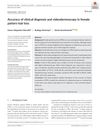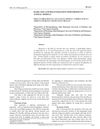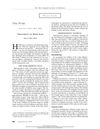Androgenetic Alopecia: Etiopathogenic Aspects, Diagnostic Methods, and Therapeutic Approaches
June 2023
in “
Brazilian Journal of Health Review
”
androgenetic alopecia common baldness miniaturization terminal hair follicles anagen phase dermatoscopy hormonal dosages scalp biopsy topical medications Minoxidil topical Finasteride growth factors laser application systemic medications oral Finasteride Dutasteride Spironolactone Cyproterone nutraceuticals hair transplantation Rogaine Propecia laser therapy Avodart Aldactone Androcur hair transplant

TLDR Common baldness is a hereditary condition that can be treated with medications or surgery to prevent progression and improve self-esteem.
Androgenetic alopecia (AA), also known as common baldness, is a hereditary follicular disorder of the scalp that significantly affects self-esteem. It is multifactorial, primarily related to genetic factors, but also influenced by environmental, emotional, and hormonal factors. The pathogenesis is related to the miniaturization of androgen-dependent terminal hair follicles, resulting in a smaller follicle and a reduced anagen phase. Diagnosis is often clinical, based on the history and clinical characteristics of hair loss, which can be evaluated by dermatoscopy and some criteria. Hormonal dosages and scalp biopsy can also be useful. Therapeutic management is essential to prevent progression and worsening of quality of life and self-esteem. Current treatment options for AA include topical, systemic, or surgical methods. Topical medications include Minoxidil, topical Finasteride, growth factors, and laser application. Systemic medications include oral Finasteride, Dutasteride, Spironolactone, Cyproterone, and nutraceuticals. In refractory or more severe cases, hair transplantation can be used. It is important to counsel and clarify with the patient about achievable expectations from medical therapy and possible side effects.






